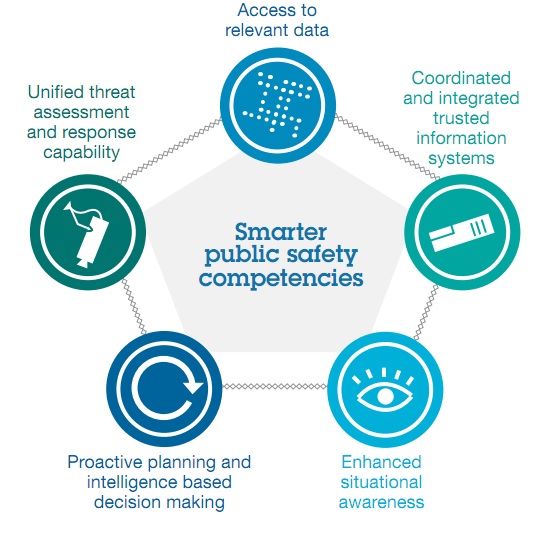Generic
The new relationship Citizen – Government* (last part): Guaranteeing public safety
24/02/2015 | Written by: Think Blog redactie (0cB)
Categorized: Generic
Share this post:
Populations’ levels are climbing and urban infrastructure growth has not kept pace. But citizens still expect certain performance levels for services such as public safety, transportation, power and water. Therefore, guaranteeing public safety and protecting citizens against crime are two key public services.
Politicians and citizens consistently rank safety and security as a high priority. Good policing, emergency services, disaster preparedness and response help communities thrive. Yet with public budgets under severe strain, funding is a challenge. New initiatives must demonstrate tangible economic benefits.
A changing security environment adds to the challenge. There is more data than ever. Up to 80 per cent of it is unstructured and hard to analyse. New challenges range from cybercrime to “flash mobs” driven by social media. This new landscape requires that first responders need to work together, share resources and respond quickly.
And of course public expectations are high because of the money being spent on public safety. Citizens also see the impact that information sharing is having in improving other aspects of their daily lives.
With data collection happening everywhere for all kinds of purposes, real-life problem solvers have new ways to enhance their intuition. For solutions to everything from traffic tie-ups to security breeches, public safety agencies can gather disparate, voluminous data and use analytics to derive new insights and uncover trends before they become systemic issues or criminal events.

The IBM Intelligent Operations Center synchronizes and analyzes information gathered from diverse data-collection systems. Patterns revealed through analytics help decision makers anticipate—rather than just react to—problems, and dispatch first responders to the scene faster. The results, such as predictive policing, mean better citizen-centered service, whether minimizing inconveniences, overseeing emergencies or stopping crime. The main advantage of using predictive analytics is that enables analysts to add experiences, intuition and human knowledge to the mix.
Governments have at their disposal a wealth of information that needs to be put to better use in providing a higher level of service towards citizens, combatting fraud and protecting citizens from crime and other threats. Through Big Data, mobile technology and analytics, governments worldwide can boost their efficiency. The evolution from a reactive to a proactive service provider will not take place overnight. On the contrary, it will be a steady but nevertheless indispensable process.
Don’t forget to read the full IBM White Paper: IBM White Paper.

Author: Joan Van Loon, Enterprise Business Unit Leader Public, Life Sciences, Telco & Utilities | IBM Belux
About the author: Joan has over 17 years of experience in business management and management consulting, with expertise in diverse areas like business operations and transformations, IT strategy & governance, quality management, knowledge management and people management. He is currently leading the Public Sector in IBM Belux with personal focus on Watson, government innovation and healthcare.
____________________________________________________________________
*The new relationship Citizen – Government is full series of 8 articles and studies about how the new era of technology changes is perceived and embraced by the public authorities and which are the new challenges encountered when trying to keep or build a relationship with the modern citizen or when trying to ensure them with security.
Automate work and accelerate business growth
Many companies need help to navigate the rapid changes that define today’s business environment. To improve their responsiveness and flexibility, they are looking for new ways of conducting business, rethinking their processes, and investing in digital transformation projects to increase the robustness of their operations. They rely on business automation technologies to cut out repetitive […]
Sustainability and the technologies enabling the transition
Creating a sustainable future demands significant technological innovation to decarbonize society, restore biodiversity and ecosystem health, foster thriving oceans for sustenance and economic growth, remove atmospheric carbon, transition to sustainable agriculture, and advance eco-friendly cities that align with our vision for a better future. Generative AI has achieved much in recent years and now surpasses […]
Technology in action at Think Summit 2021
Covid 19, the energy transition and climate change require business agility… right away! Organizations that are slowly starting their digital transformation are irrevocably overtaken by competitors: companies that can quickly realize new, sustainable business models with a remote workforce. How can organizations leverage innovations such as AI, machine learning and hybrid cloud to make […]



